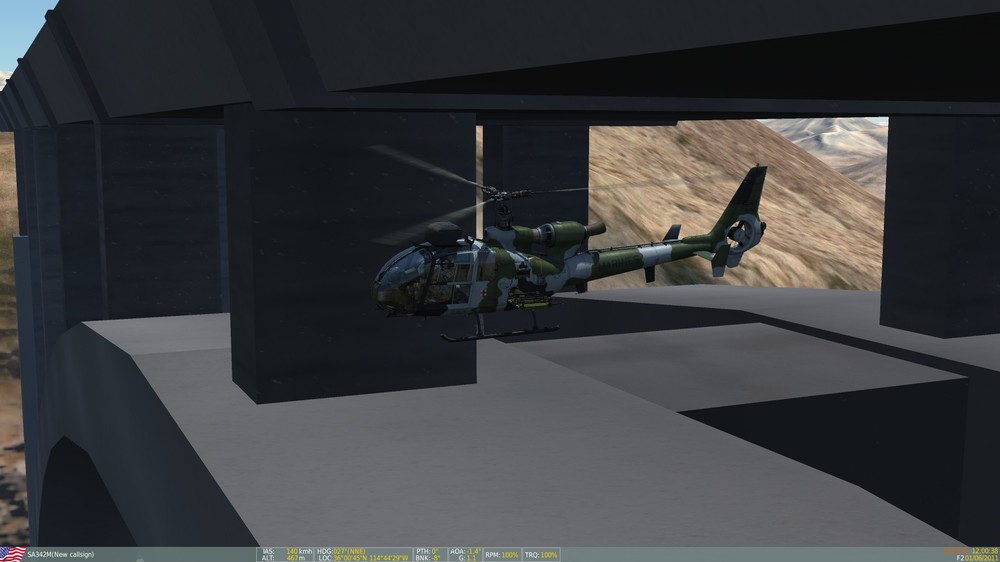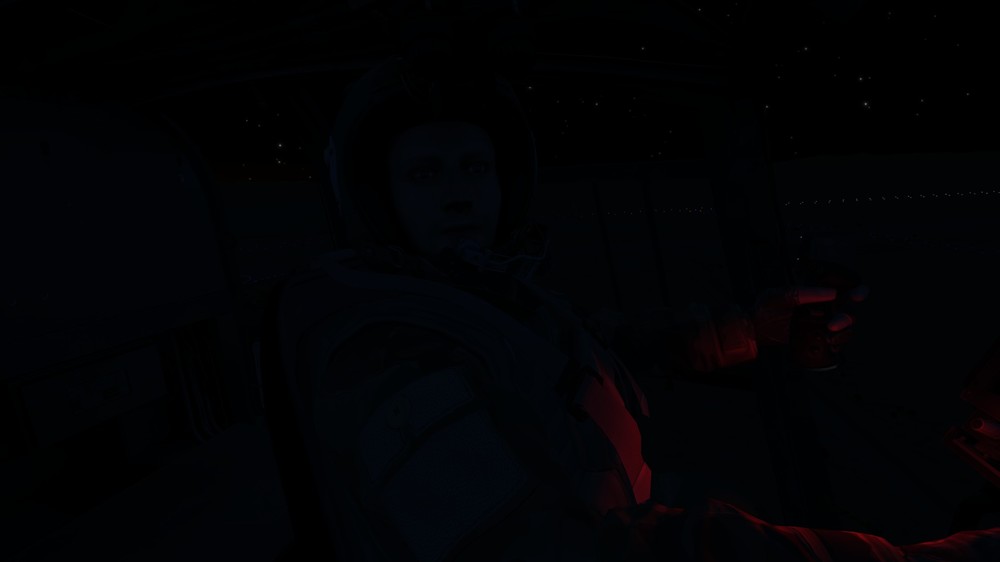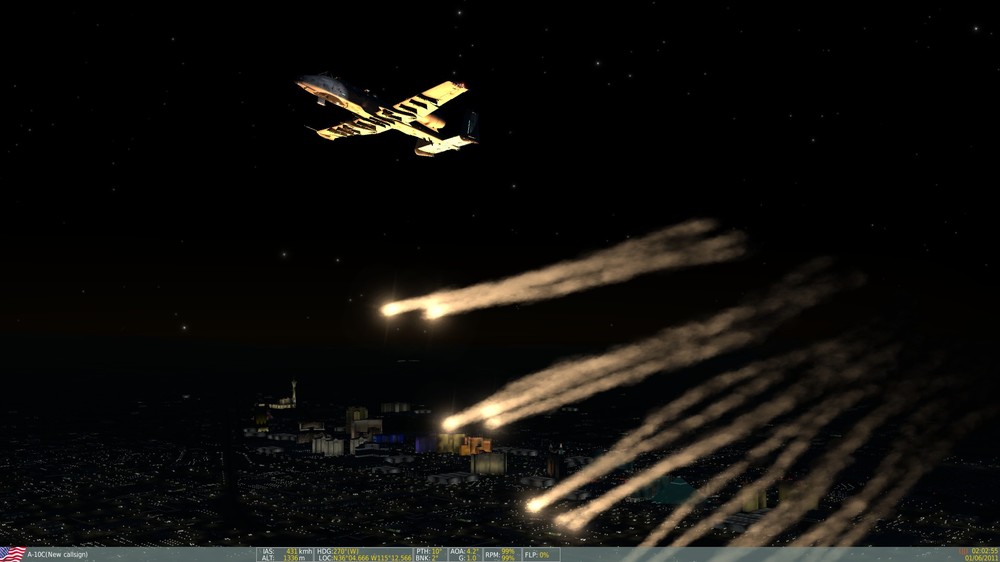

Cykyrios
Members-
Posts
97 -
Joined
-
Last visited
Personal Information
-
Flight Simulators
DCS
-
Location
France
-
Another easy way to test ground effect is to hover right next to a building, while out of ground effect: when the rotor starts overlapping the roof of the building, you will see the helicopter literally jump. Ground effect in the Gazelle definitely feels different from the Huey, but it's there all right.
-

[HELP] The meaning of some cockpit lables in French
Cykyrios replied to uboats's topic in SA-342M Gazelle
Being French, but without the whole context (I haven't checked the position of all those labels), here's what I can say: 3. LEU = leurre (countermeasure) 4. P.A. is indeed AP, AMORT. is short for "amortissement" (damping) I believe 5. I assume this indicates an issue with the navigation system? (it's navigation in French as well) 7. SERVO is a way to shortern "asservissement", probably the auto-pilot slaving options 8. tir autorisé (launch authorized) and missile prêt (missile ready) The others I'm not sure/don't know the exact context, but others will most likely have some answers. -
When flying backwards, the piece of string points the wrong way. It seems to be limited to a 180° arc.
-
As I said however, in the situation I tested, I had very little speed (oscillating between positive and negative, and well below ETL speed), and managed to stop the descent by simply pulling collective - this should be a recipe for VRS, but that was enough to recover. There have been other situations where I did encounter VRS, mostly when coming for an approach. More testing is required, I guess.
-
I just tried a quick flight over Groom Lake, starting at 2000 m and 200 km/h. I came to a stop and tried to get into VRS... much to my surprise, I didn't notice VRS at all: the rotor didn't overspeed, and I was falling at about 70 km/h. When I got close to the ground, I simply pulled the collective and stopped the descent. The only way I got the rotor to somewhat overspeed was to autorotate, but even then the alarm only sounds a second or 2 at a time, while my collective is at zero and I try my best descending vertically.
-
I haven't flown the Gazelle that much yet (will do more flying today), but one thing I quickly noticed (other than that I was really bad) is the ground effect, which seems to behave differently from the Huey (at this point, at least): in the Huey, once you pull just enough collective to get off the ground, you'll stay at a foot or 2, and will basically stay there without touching the collective, as long as you don't maneuver too hard. In the Gazelle though, pulling the collective slowly makes her want to go forward, so I have to pull aft cyclic. Before I even get off the ground, I'm either going 20+ km/h forward and/or scraping the tail. Once I'm a few meters above the ground, she will go several meters up and down without touching the collective, and even coming to a stop can make her touch the ground instead of "sitting" on the air cushion. Is that just a trait of the Gazelle, which requires pilots to constantly adjust collective even while hovering in ground effect? I also noticed that the torque from the tail rotor affects lift quite a bit, so that might play a role as well.
-
-
The difference in blur depending on the helicopters is inconsistent, and that blur should only depend on rotor RPM and camera settings/human eye. Some cameras have very little motion blur, which results in sharp-looking rotor blades, and sometimes the blades look as if they were turning really slow (depends on the framerate). On the other hand, some cameras have a lot of motion blur, and they will display a blurred disc, which I believe is what the human eye perceives from outside a helicopter. Now, a game will generally behave as the former type of cameras, unless motion blur is simulated, and shadows are another difficult part. In DCS though, blur is purely "artistic" and depends only on the devs, as the turning rotor is a completely separate 3D model from the slow rotor one. If anything, I'd rather say the Shark's rotor blades are NOT blurry enough, but at this point, it is just a matter of preference.
-
As a pilot/passenger in a helicopter, you won't see the flickering shadow because your eyes aren't "fast" enough, while a camera (or video game) can display non-blurred pictures of the shadow, which your eyes can then see, and that is the flickering we notice.
-
A snap roll is actually caused by a wing stalling before the other one does. I do believe though, that torque from the engine makes it easier to roll one way (to the left IIRC). I also think the effect is noticeable at higher speeds, where your snap roll will be faster to the left than it will be to the right (again, IIRC).
-
I don't know what helicopters you fly in Arma, but unless you're using the advanced flight model, Arma's helicopters are pretty unrealistic, with collective acting as an altitude control rather than actually controlling the collective pitch of the rotor blades. Helicopters can require substantial collective adjustments for some maneuvers, and this is especially true when you slow down to get in a hover: you can easily reach 80% collective when out of ground effect. A simple way to check this in Arma is to simply pitch up slightly to slow down, and you will stop with no issues after some time, without even using the collective (unless that has changed, I haven't played Arma in a while). You basically cannot have the collective in DCS act as it does in Arma, and the only way to emulate that would be to constantly adjust collective to get similar behavior. If you haven't already, try Arma's advanced flight model, as it should be closer to what DCS does.
-
I don't think there's a way to "undo" the lighting the same way pressing L illuminates everything. However, the controls for cockpit lighting are the 5 right-most knobs in the cockpit; pressing L merely turns them all to almost max brightness. If you already knew this and simply wanted a way to turn everything off, I can't really help you, though, but your best bet would probably be to add a modifier key, so you'd have to press shift+L or ctrl+L (making sure those aren't used by something else).
-
If you're talking about AI aircraft, then things are different, but a player-controlled Mustang will probably not last long if it starts producing black smoke. White "smoke" can come from leaking fuel, but whenever you start releasing black smoke, you're pretty much toast in a few seconds/minutes. Of course, the AI doesn't care about damage at all, unless they lose a wing. Sometimes they simply abandon the fight, turn their lights on and start heading home, others they keep fighting as if the plane was in perfect condition. As for the actual amount of smoke, however, I cannot say, but you should be able to find some WW2 footage here and there to check that. It does seem to me that the amount is the same for every aircraft, even jets (in DCS, I mean, not in the real world).




